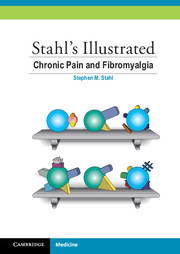Chapter 4 - Pain Disorders
Published online by Cambridge University Press: 19 October 2021
Summary
As many as 90% of conditions generally diagnosed as a pain disorder may arise from injuries to the peripheral nervous system as opposed to central nervous system. Central pain disorders are often diagnosed as a psychiatric disorder, although incorrectly. Painful peripheral nervous system disorders include postherpetic neuralgia (PHN), diabetic peripheral neuropathic pain, and trigeminal neuralgia. Pain disorders can often develop as a result of poor pain management during surgery or other acute pain traumas. In a medical environment where over 20 different pain management guidelines exist, it is critical to understand the pathophysiology of pain and the etiology of its different disorders in order to effectively fight this destructive sensation.
Chapter 4 introduces specific pain disorders, including pain as a symptom of another disorder or as a comorbidity, and provides tips for accurately recognizing and diagnosing these disorders early. Because of the progressive nature of pain disorders, early and accurate detection is likely the variable most indicative of effective pain management and optimum patient recovery.
This disorder is hypothesized to be caused by central sensitization, particularly in the thalamus and cortex, such that CNS insult is added to no apparent peripheral injury.
There are various criteria for the diagnosis of fibromyalgia, the most prominent being the ACR (American College of Rheumatology) Criteria, which necessitate a tender point evaluation (see Figure 4.2). One difficulty that currently interferes with recognizing and diagnosing fibromyalgia lies in the fact that fibromyalgia does not present regularly or straightforwardly; especially early in the course of illness, fibromyalgia can present as TMJ (temporomandibular joint disorder) or other pain disorders.
Some drugs have recently been approved for management of fibromyalgia in the United States, but as of this writing no drugs have yet been approved for this purpose in Europe.
Some controversy regarding these criteria has arisen in recent years, in that tender points may not be the most accurate criterion to diagnose fibromyalgia, especially in men. The tender point criterion, as set forth by the ACR, requires that 11 out of 18 points on the body exhibit some tenderness. Fibromyalgia, however, being a varied and not-entirely-understood disorder, may not be so cut-and-dry.
- Type
- Chapter
- Information
- Stahl's Illustrated Chronic Pain and Fibromyalgia , pp. 57 - 80Publisher: Cambridge University PressPrint publication year: 2009

